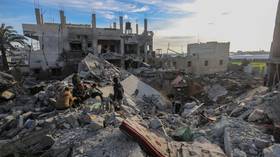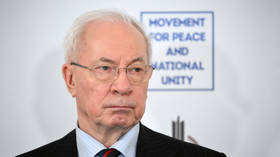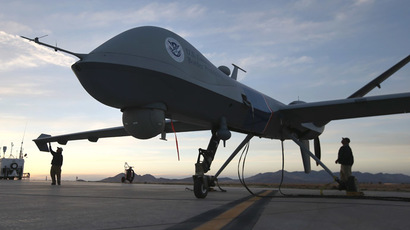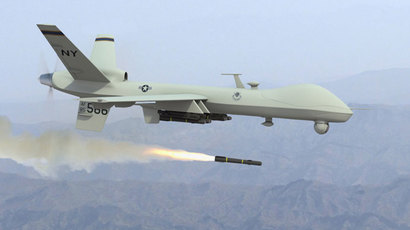US drone pilot demand outstrips supply

The US Air Force is now facing a shortage in the number of pilots able to operate the military’s quickly expanding drone fleet, according to a new report published by a top Washington, DC, think tank.
According to Air Force Colonel Bradley Hoagland, who contributed
to a recent report on the Air Force’s drone program prepared by
the Brookings Institution, it is quickly hitting a wall in the
number of operators for its 159 Predators, 96 Reapers and 23
Global Hawks.
Although the US military aimed to train 1,120 ‘traditional’
pilots along with 150 specialized drone pilots in 2012, it proved
unable to meet the latter, owing to a lack of RPA (or remotely
piloted aircraft) volunteers.
A recent report by AFP placed the Air Force’s current drone pilot
wing at 1,300, about 8.5 percent of the air corps’ pilots.
Still, an increasing number of uses for America’s drone fleet,
including recently-revealed plans by the Defense Advanced
Research Projects Agency (DARPA) for drones able to operate from
naval vessels, have quickly exceeded the Air Force’s ability to
train personnel to train and pilot unmanned aerial vehicles
(UAVs).
One of the biggest hurdles faced by the Air Force drone program
is a high rate of attrition among its pilots, which is three
times higher than that of traditional aircraft pilots.

Underpinning that rate of personnel loss are low potential for
advancement, owing to the drone fleet’s high frequency of CAPs,
or combat air patrols.
Compared to traditional manned aircraft, it usually takes three
to four drones to constitute what the Air Force considers a
combat air patrol. Ultimately, drone operators face a punishing
rotation, with little time left for additional education and
training leading to rank advancement.
The Brookings report indicates that, compared to other military
tracks, drone pilots face a 13 percent lower promotion rate to
the rank of major in the last five years.
“In the next 20-30 years these things are going to
explode,” Gen. Mark Welsh, the Air Force chief of staff, said
to a conference last September. That particular quote was
included in a recent Wired report highlighting some budget cuts
to America’s drone program, which will experience a decrease of
$866 million in 2014’s total budget of $1.3 billion for drone
research.
Yet the long-term outlook for unmanned aerial vehicles among the
Air Force appears strong, a fact highlighted by the military’s
inability to keep pace in its training requirements. Despite
budget cuts in research, the Air Force is still planning to
acquire an extended-range version of its MQ-9 Reaper drone, for
example.
Even more indicative of the drone program’s continued resilience
is the US military’s unsuccessful bid to cancel purchase of
Northrop Grumman’s hulking Global Hawk drones, which generated an
intense lobbying blitz by the manufacturer.
Those cutbacks would have saved the US $2.5 billion over the next
five years, according to projections cited by the Center for
Public Integrity.














